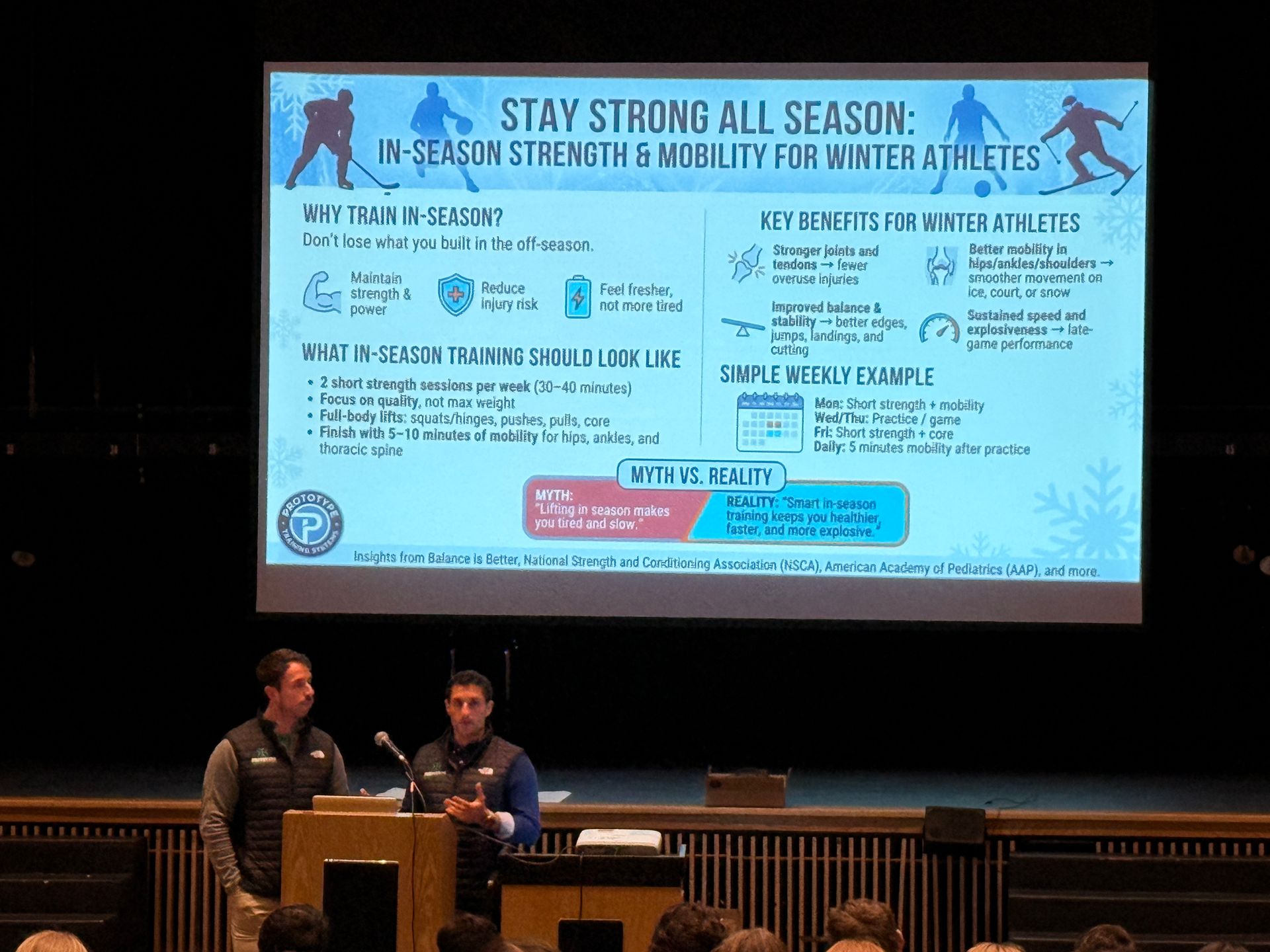Introducing Coach Marissa Garofano: Our Newest Addition to Prototypes Team
Shay Knolle • July 23, 2024
About Marissa:
We are thrilled to welcome Marissa to the Prototype Training Systems team! With an impressive background in health, fitness, and wellness, Marissa brings a wealth of knowledge and experience to our gym community.
Marissa holds a Bachelor’s in Health Science and a Master’s in Public Health from Boston University. Her passion for fitness and health is further backed by her certifications as a NASM-certified personal trainer, with additional specializations in Nutrition and Health coaching.
From a young age, Marissa’s life has been intertwined with movement. She danced competitively throughout high school and continued her dance journey with BU’s Dance Theater Group in college. After college, Marissa’s love for movement evolved as she took on new challenges as an aerialist and runner. To date, she has completed 14 half marathons and 3 marathons, with an inspiring goal to run a half marathon in every state. She is currently training for the 2024 NYC marathon.
Marissa’s passion for fitness extends beyond her personal achievements. For the past decade, she has been dedicated to teaching dance to youth ages 2-18. Additionally, she has made her mark as a ninja warrior coach, leading both recreational and competitive classes, and coaching athletes at local, regional, and national competitions.
Marissa previously worked at the Hockomock Area YMCA as their director of community wellness, where she oversaw youth programming aimed at helping kids and their families live healthier lives.
At Prototype Training Systems, Marissa will be coaching CrossFit classes and personal training sessions. She will also be leading our fundamentals classes, focusing on youth training and development.
Join us in welcoming Marissa to Prototype Training Systems! Stop and say hi to her the next time you see her in the gym.

Previous Blogs

Greg is an amazing part of our community — consistent, encouraging, and ready to get after it. He truly represents what the PTS community is all about. Prototype of the Month is well deserved! Below, he answers a few questions about his time at PTS. Share your experience at Prototype—favorite memories, moments, or stories or what’s your favorite part/what do you look forward to? I definitely look forward to that feeling of clarity after finishing up a workout. I feel ready to tackle the rest of the day. Sometimes I have trouble getting mentally ready for a tough looking metcon, but I always feel better afterwards. Who at Prototype has made the biggest impact on you and why? All the coaches and members are great, I look forward to seeing everyone when I am there, but the person who has made the biggest impact is Bridget Owens. She is my motivation and always pushes me to keep going and push myself to get better. What are your hobbies and activities outside the gym? I love cycling and mountain biking, the workouts at prototype have definitely helped improve my fitness so that I can do better on the bike even though I don’t get out as often as I would like. Also spending time with my family, grilling and BBQing when the weather is nice and getting to the beach in the summer. How has Prototype helped you or solved a problem for you? Prototype has helped enormously with my level of anxiety, I was really struggling when we first moved into town, the community and workouts at Prototype have been a life saver for my mental health. What are your current fitness goals? I want to get better at gymnastics, maybe get some toes to the bar. Favorite Quote Two Quotes: “Bone on bone, stack it” -Jon “Activate the lower half” -Brian

Devon is a fantastic part of our community — always kind, coachable, easy-going, and consistently putting in the work. She shows up, supports others, and truly represents what PTS is all about. Prototype of the Month is well deserved! Below, she answers a few questions about her time at PTS. 1.) Share your experience at Prototype After what felt like an entire year of sitting during grad school, I knew I wanted to be more active. I came back to Prototype, and it was the best decision. I’ve made so many new friends here who make every class fun (no matter how tough the workout is) but my favorite moment has to be meeting my boyfriend Ed! 2.) What is your favorite part about being at Prototype? I used to do at-home workouts and always felt like something was missing. When I came to Prototype, it felt like I finally found that missing piece, the community! It truly makes a huge impact. Everyone here genuinely wants the best for you. 3.) What are your hobbies and activities? If I’m outside, I love playing pickleball, skiing, and going for walks. And if I'm inside I enjoy crocheting, reading, or baking! 4.) How has Prototype helped you or solved a problem for you? Prototype has shown me that if you put your mind to something, you can truly do hard things. I also know I will always feel better after going to the gym. Sometimes the hardest part is just getting in the car, but I never regret it once I’m there. 5.) What are you continuing fitness goals to this point? To get some form of movement everyday and to one day get a pull up. 6.) Favorite Quote “Laughter is timeless, imagination has no age, dreams are forever.” -Walt Disney
Climb to New Heights
Prototype Training Systems is more than a gym - it is a lifestyle. Join us today!


